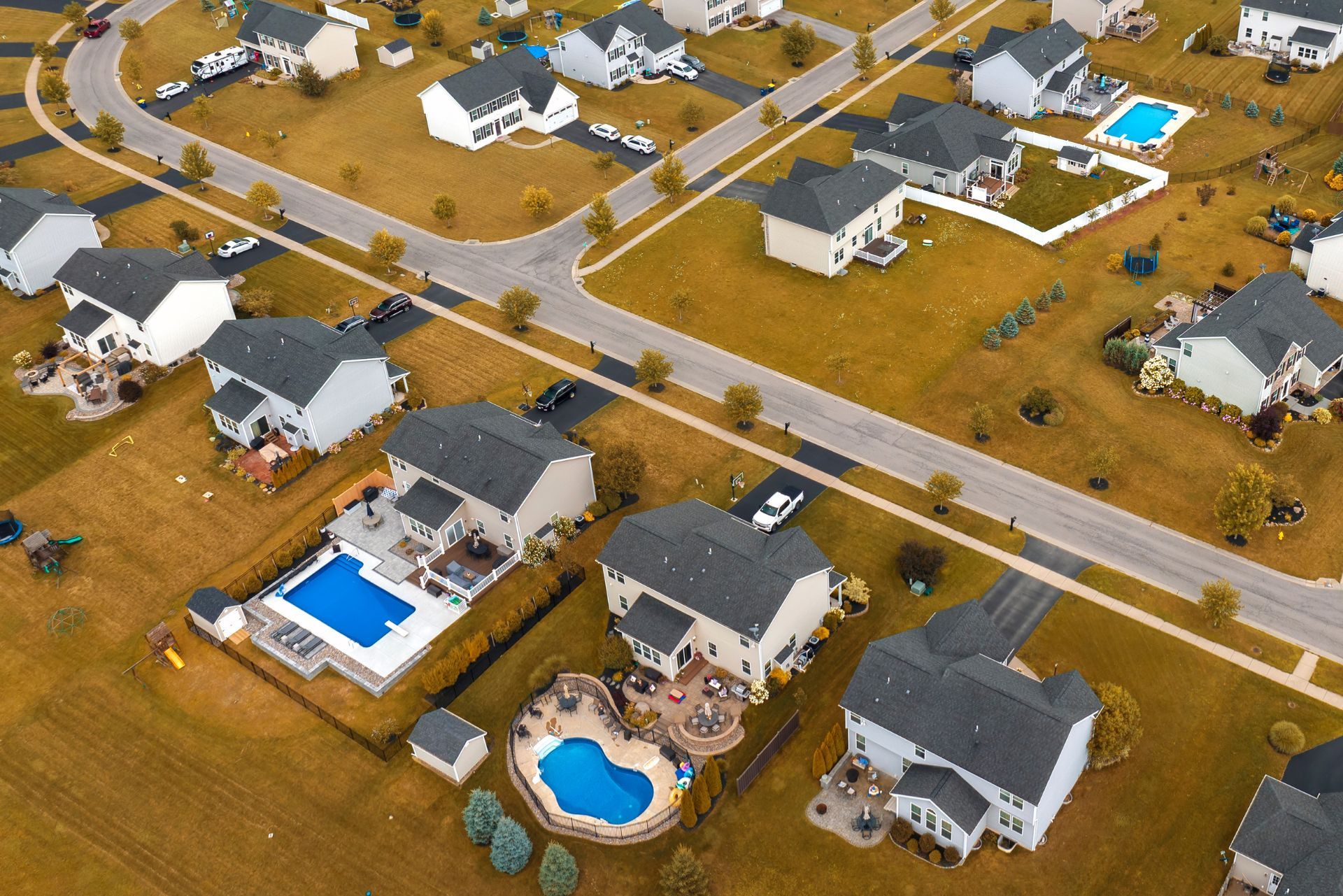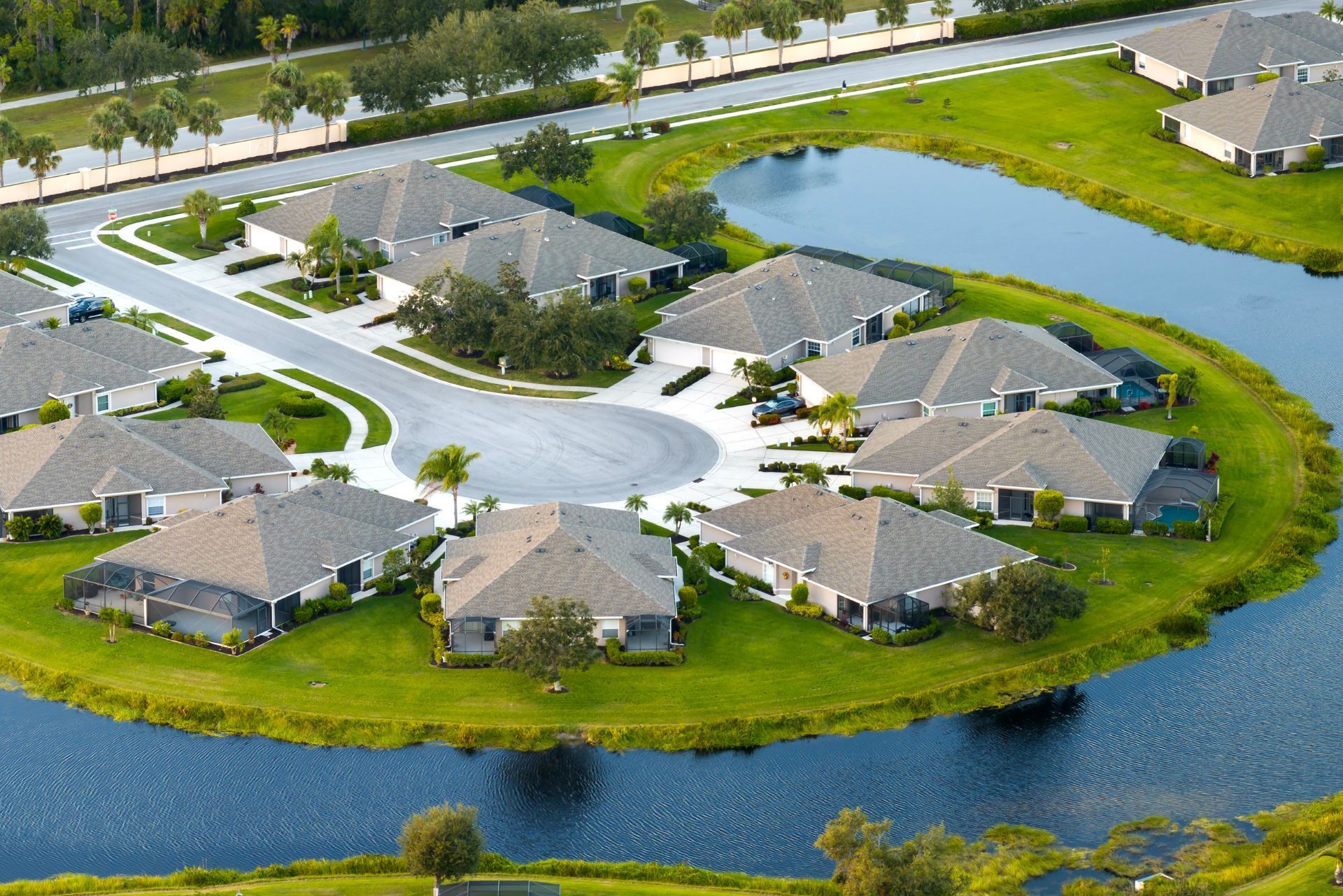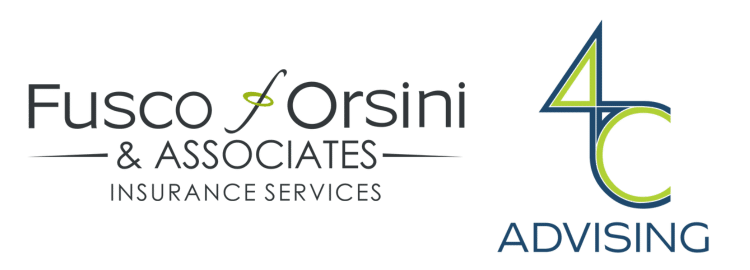Top 3 Recommended Policies

Homeowners' Associations (HOAs) play a crucial role in managing and maintaining residential communities across New Mexico. However, navigating the complexities of HOA insurance in the state has become increasingly challenging due to rising premiums, legal developments, and market shifts. This comprehensive guide explores everything you need to know about New Mexico HOA insurance—from the current market landscape to key considerations for associations and homeowners alike.
With home insurance premiums in New Mexico rising by 16% between 2020 and 2023 and an alarming 23.3% of homes uninsured statewide, understanding HOA insurance is more important than ever. For more context on these trends, Source New Mexico provides detailed insights into the affordability crisis impacting homeowners across the state.
The Current Landscape of HOA Insurance in New Mexico
The insurance market for HOAs in New Mexico is undergoing significant changes. The industry is projected to decline to $51.8 million over the five years leading up to 2024, reflecting broader challenges faced by associations in securing affordable coverage. This decline is partly driven by increasing insurance costs and a shifting legal environment that impacts liability exposure for HOAs.
One of the main contributors to rising insurance costs is the surge in jury awards in personal injury cases within New Mexico. Over the past five years, awards have grown substantially, with one notable case in Santa Fe resulting in a $37.2 million verdict. These high-profile cases increase risk perceptions among insurers, leading to higher premiums for HOAs and homeowners alike.
Additionally, the state has witnessed a 31% increase in home insurance policies not being renewed between 2018 and 2023, signaling growing difficulties for homeowners to maintain coverage. This trend, combined with New Mexico having the highest rate of uninsured homes in the U.S. at 23.3%, underscores the urgency for HOAs to carefully evaluate their insurance strategies to protect their communities effectively.
Why Are HOA Insurance Costs Rising?
Several factors contribute to the rising costs of HOA insurance in New Mexico. Natural disasters, such as wildfires and severe weather events, have increased in frequency and severity. In 2023 alone, the U.S. experienced 28 "billion-dollar disaster events," the highest on record, which has put upward pressure on insurance premiums nationwide.
In New Mexico, counties like Hidalgo, Roosevelt, and Curry have seen home insurance premiums surge between 41% and 47% from 2020 to 2023. These spikes reflect heightened risks and losses insurers have faced, which they pass on to policyholders, including HOAs.
Moreover, legal and regulatory factors, including increased jury awards, contribute to insurers’ cautious stance. This environment makes it more difficult and expensive for HOAs to secure comprehensive liability and property coverage.
Another significant factor influencing the insurance landscape is the evolving nature of community living itself. As more people move into HOAs, the complexity of managing shared spaces and amenities increases. This complexity can lead to disputes among residents, which may result in litigation. For instance, disagreements over maintenance responsibilities or the use of common areas can escalate into legal battles, further driving up insurance costs. Insurers are keenly aware of these dynamics, and as a result, they may adjust their pricing models to account for the potential for increased claims stemming from community disputes.
Furthermore, the demographic shifts in New Mexico are also impacting the insurance market. An influx of retirees seeking a more affordable cost of living has led to a higher concentration of older residents in many HOAs. This demographic shift can result in a higher incidence of claims related to slips, falls, and other injuries, which in turn raises the risk profile for insurers. As HOAs adapt to these changing demographics, they must also consider how their insurance policies can evolve to meet the unique needs of their communities, ensuring adequate protection while managing costs effectively.
Key Components of New Mexico HOA Insurance
Understanding the types of insurance coverage essential for HOAs is vital for effective risk management. Typically, HOA insurance policies include several core components designed to protect the association, its board members, and homeowners.
Property Insurance
Property insurance covers damages to common areas and shared structures such as clubhouses, pools, landscaping, and exterior building elements. Given the rising costs of property insurance in New Mexico, HOAs need to ensure their policies provide adequate coverage limits to handle potential wildfire damage or other natural disasters. Additionally, it is prudent for HOAs to conduct regular assessments of their property values and update their insurance policies accordingly. This proactive approach not only helps in maintaining sufficient coverage but also aids in budgeting for future improvements or repairs that may be necessary due to wear and tear or unforeseen events.
General Liability Insurance
This coverage protects the HOA against claims of bodily injury or property damage occurring on common property. With personal injury jury awards increasing significantly in New Mexico, having robust liability coverage is crucial to safeguard the association’s financial health. Furthermore, it is advisable for HOAs to implement safety measures and regular maintenance checks to minimize the risk of accidents on their properties. By fostering a safe environment, associations can not only reduce the likelihood of claims but also enhance the overall community experience for residents.
Directors and Officers (D&O) Insurance
D&O insurance shields HOA board members from lawsuits alleging mismanagement or breaches of fiduciary duty. Given the complex legal environment and potential for costly litigation, this coverage is increasingly important to attract and retain qualified board members. Moreover, HOAs should consider providing training and resources for their board members to better understand their roles and responsibilities. This investment in education can empower board members to make informed decisions and mitigate the risk of legal challenges, ultimately fostering a more effective governance structure.
Fidelity Bonds and Crime Insurance
These policies protect the HOA from losses due to fraudulent or dishonest acts by board members or employees handling association funds. While often overlooked, they are essential for maintaining financial integrity and homeowner trust. In addition to securing these policies, HOAs should implement strict financial controls and regular audits to deter potential misconduct. Transparency in financial dealings not only reassures homeowners but also strengthens the community's overall trust in its leadership, fostering a collaborative and engaged environment.

Challenges Facing New Mexico HOAs in Securing Insurance
HOAs in New Mexico face unique hurdles when obtaining insurance coverage. The combination of rising premiums, limited market availability, and increased liability exposure creates a challenging environment.
Limited Insurance Market and Rising Premiums
Many insurers have become reluctant to underwrite HOA policies in New Mexico due to the elevated risks and claims environment. This reduction in available carriers drives premiums higher and reduces options for associations seeking coverage.
For example, home insurance premiums in New Mexico increased by 8.3% between 2020 and 2023, with a sharp 47% surge from May 2021 to May 2023. This trend directly impacts HOAs, which often insure multiple properties and common areas, amplifying their overall insurance costs. The situation is exacerbated by the fact that many insurers are tightening their underwriting standards, leading to more stringent requirements for coverage, which can be particularly burdensome for smaller associations with limited budgets.
High Rate of Uninsured Homes
The state’s high uninsured home rate—23.3%—adds complexity for HOAs. Uninsured homeowners can increase the risk exposure for the association, especially if damages or liabilities arise from individual properties. HOAs must often enforce insurance requirements and educate homeowners about the importance of maintaining coverage. This can involve organizing community meetings, distributing informational materials, and even providing resources to help homeowners find affordable insurance options. The challenge lies not only in the enforcement of these requirements but also in fostering a sense of community responsibility among residents.
Legal Environment and Increased Jury Awards
The growth in personal injury jury awards, including multi-million-dollar verdicts, has heightened liability risks for HOAs. This environment necessitates careful risk management and often results in higher premiums for liability coverage. The legal landscape is further complicated by the increasing frequency of lawsuits against HOAs, often stemming from disputes over property maintenance, safety issues, or governance practices. As a result, many associations are now investing in comprehensive risk assessments and legal consultations to mitigate potential liabilities before they escalate into costly legal battles.
More details on these legal trends can be found through
Marsh McLennan’s insurance market update, which highlights the impact of such awards on the Southwest insurance market. Additionally, the report emphasizes the importance of proactive measures that HOAs can take to protect themselves, such as implementing safety protocols and enhancing communication with residents to ensure that everyone understands their rights and responsibilities within the community.

Best Practices for New Mexico HOAs to Manage Insurance Risks
Despite the challenges, HOAs can adopt strategies to better manage their insurance risks and control costs. Proactive risk management not only helps reduce premiums but also protects the community’s assets and reputation.
Conduct Regular Risk Assessments
HOAs should regularly evaluate their properties and operations to identify potential hazards. This includes inspecting common areas, maintaining landscaping to reduce wildfire risks, and ensuring compliance with safety codes. Regular assessments can also involve engaging professionals to conduct thorough evaluations, which can uncover hidden risks that may not be immediately apparent to board members or residents. Additionally, documenting these assessments can provide valuable insights over time, allowing the HOA to track improvements and identify recurring issues that may require more comprehensive solutions.
Implement Strong Insurance Requirements for Homeowners
Requiring homeowners to maintain adequate individual insurance coverage helps reduce the association’s overall risk. Clear policies and communication about insurance obligations can improve compliance and protect the community. Furthermore, HOAs can consider offering workshops or informational sessions to help residents understand the types of coverage that are essential for their properties. By fostering an environment where homeowners feel informed and supported in their insurance choices, the HOA can enhance community cohesion and ensure that all members are adequately protected against potential liabilities.
Work with Experienced Insurance Brokers
Partnering with brokers knowledgeable about New Mexico’s unique insurance market can help HOAs find the best coverage options and negotiate favorable terms. Brokers can also assist with claims management and risk mitigation advice. Establishing a long-term relationship with a trusted broker can lead to better insights into emerging trends and changes within the insurance landscape, allowing the HOA to adapt its strategies accordingly. Additionally, brokers can provide valuable resources, such as risk management tools and educational materials, that empower the HOA to make informed decisions and stay ahead of potential challenges.
Educate Board Members and Residents
Training board members on insurance basics and risk management fosters informed decision-making. Educating residents about the importance of insurance and safety practices builds a culture of shared responsibility. This can be further enhanced by creating a dedicated section in the community newsletter or website that addresses common insurance questions, shares best practices, and highlights success stories from residents who have effectively managed their own risks. Engaging the community in discussions around safety and insurance not only increases awareness but also encourages a proactive approach to risk management, ultimately benefiting the entire neighborhood.
Looking Ahead: The Future of HOA Insurance in New Mexico
The outlook for HOA insurance in New Mexico remains complex. With ongoing increases in natural disasters and legal liabilities, associations will likely continue facing rising premiums and market constraints.
However, advances in risk mitigation technologies, legislative reforms, and increased awareness among HOAs and homeowners may help stabilize the market over time. Associations that prioritize proactive risk management and maintain strong insurance partnerships will be best positioned to navigate these challenges.
For a broader perspective on how disaster events are shaping insurance markets nationwide, the National Association of Housing and Redevelopment Officials provides valuable insights into the increasing costs driven by record disaster events in 2023.
In New Mexico, the unique geographical landscape presents both opportunities and challenges for HOA insurance. The state is prone to a variety of natural disasters, including wildfires, floods, and severe storms, each of which can significantly impact property values and insurance costs. Homeowners associations must therefore stay informed about local weather patterns and invest in community-wide preparedness initiatives. This may include creating emergency response plans, conducting regular property assessments, and implementing community education programs to ensure that residents understand the importance of insurance and risk management.
Furthermore, as the insurance landscape evolves, there is a growing emphasis on sustainability and resilience within HOA communities. Many associations are exploring eco-friendly building practices and disaster-resistant infrastructure to mitigate risks associated with climate change. By integrating green technologies and sustainable practices, such as rainwater harvesting systems and fire-resistant landscaping, HOAs can not only reduce their environmental footprint but also potentially lower their insurance premiums. This proactive approach not only enhances the safety and livability of the community but also positions the association favorably in the eyes of insurers, who are increasingly recognizing the value of risk-reducing measures.
Conclusion
New Mexico HOAs face a challenging insurance environment marked by rising premiums, increased liability risks, and a shrinking market. Understanding the key components of HOA insurance and adopting best practices for risk management are essential steps for associations to protect their communities.
By staying informed about market trends and legal developments, working closely with insurance professionals, and fostering a culture of responsibility among homeowners, HOAs can better navigate the complexities of insurance in New Mexico. This approach not only safeguards the association’s assets but also contributes to the long-term stability and well-being of the communities they serve.
Contact Us
Phone
Location




